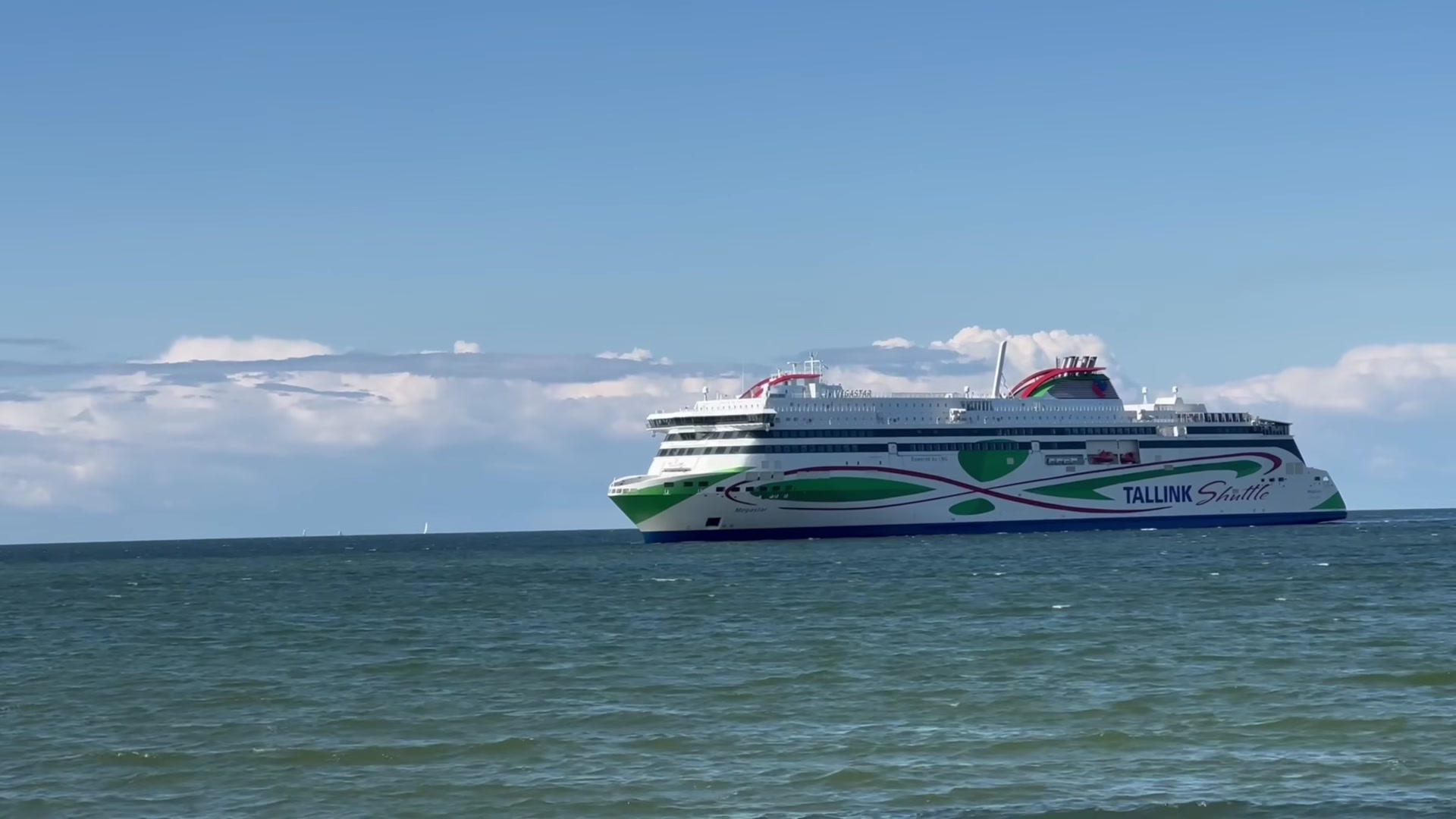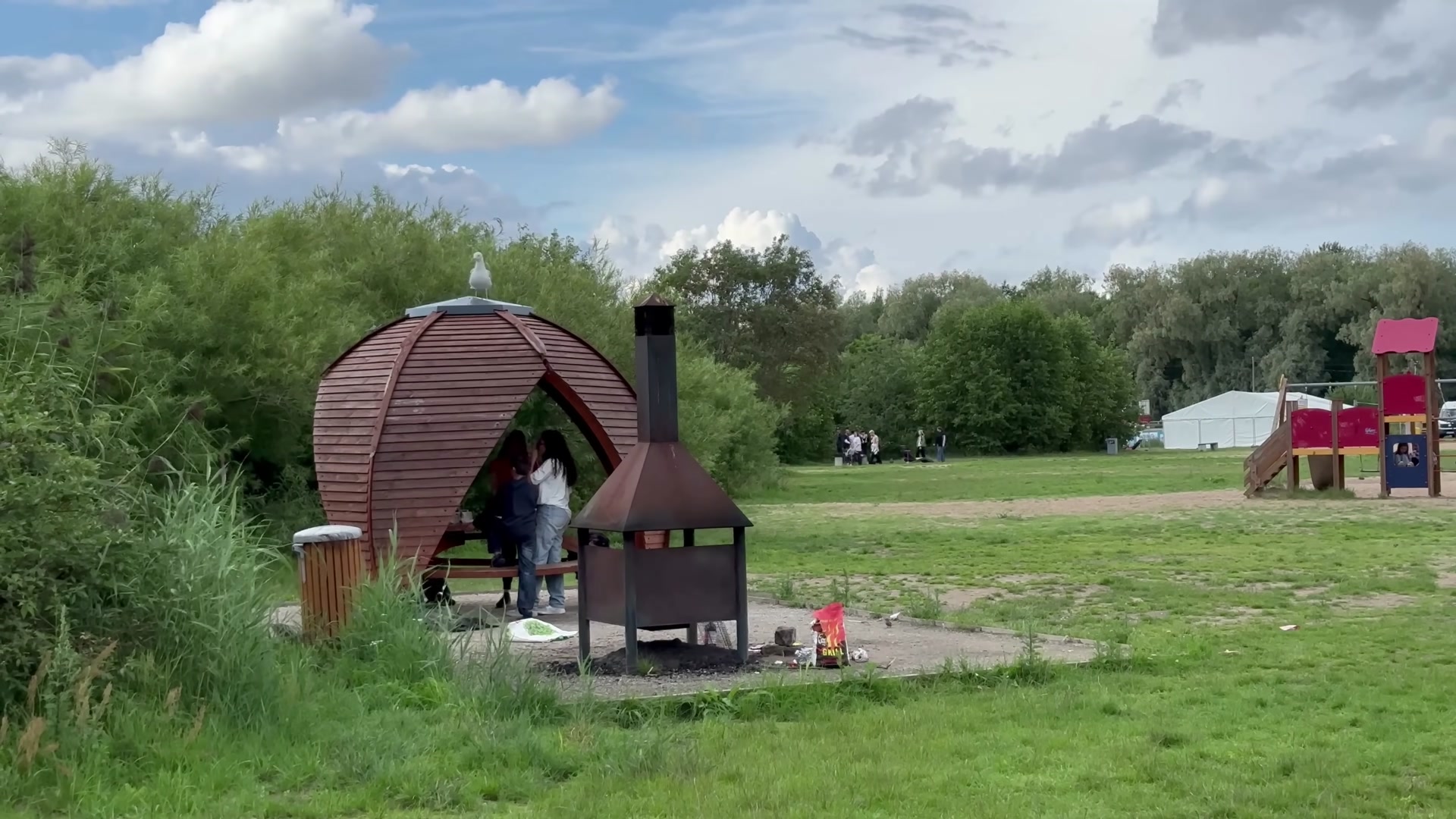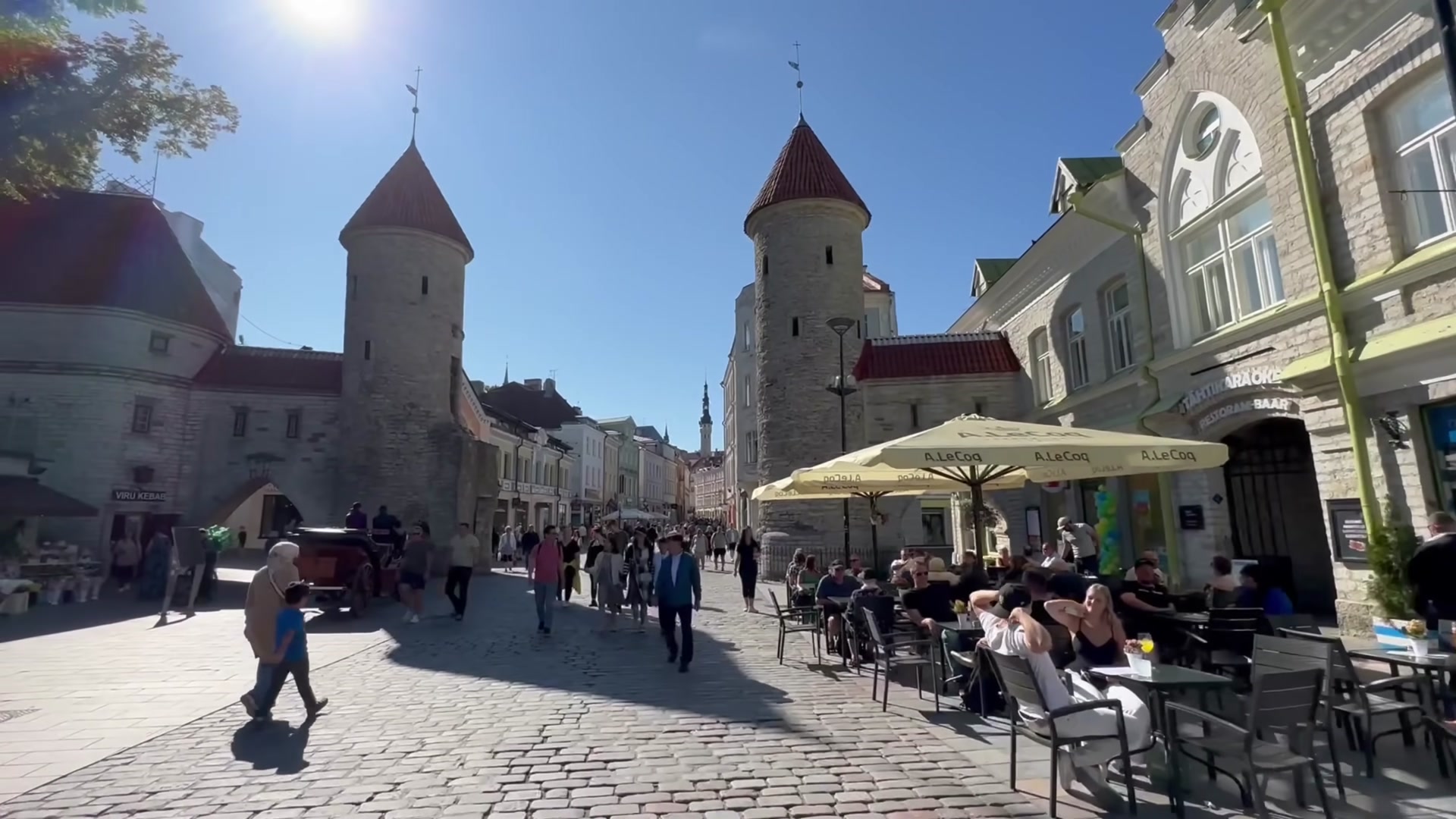
Hello friends. I’m here to share more memories from my trip to Tallinn, the capital of Estonia. I witnessed how Tallinn has changed in 2024 explored new neighborhoods and perhaps caught a glimpse of the city’s most beautiful modern areas. I also visited a neighborhood that reflects the classic post-Soviet era where ordinary people live. Finally I reached the heart of the city center, Town Hall Square. It was a wonderful day.



First of all, even those who have visited Tallinn frequently might ask "Where is this place?" The views seem quite foreign because everything we see is newly developed. These wide bike paths, jogging tracks, benches, green spaces and playgrounds have all been created recently in Tallinn. We looked north of the city center, toward the area around Stroomi Beach. There's a large beach and hotel there and we could see the coast from that spot.

When we turned to the left, we saw a more familiar scene. Here is the port and Terminal D. There was a large ship approaching us, likely arriving from Helsinki or Stockholm. We walked towards Terminal D, as this is one of the city’s fastest-growing areas. New buildings and green spaces are popping up here. There’s also an interesting revolving bridge, which we got a look at.


Tallinn has a rather unique style of decoration, the coastline features materials like stones or military items. These old materials appear as real objects in playgrounds, creating an intriguing experience for children.

Then we found ourselves on a real jogging track. This part of Tallinn has undergone a remarkable transformation and I was really impressed. I was aware of the ongoing projects here, but I hadn’t imagined them on such a large scale. We started walking towards Terminal D; the road is a bit long, but the wide bike path and walking area that extend for a few kilometers up to the port are really beautiful.

We walked about a kilometer towards the city center and encountered some quite interesting arrangements. For example, there are mine replicas made of stone and metal. They aren’t real mines, but they look charming and spray cool water on hot days. To the right, we saw another example of renovation; there is still a lot of work to be done here, but historical panels showing photos of old Tallinn, such as views from 1881 or a replica of an image from 1846, have been placed.

Now it’s time to talk about the overall renovation plan for this area. Truly extensive work has been done over a large area. However, everything we saw is actually just a small part of a massive renovation project planned to be completed by 2030. This plan envisions a complete transformation of the entire port area, creating a harmonious structure by 2030. Currently, there are still large parking lots and old industrial buildings among the renewed areas, but these spaces will also gradually integrate into the city's modern structure.


The work in this area has been carried out in the last 3-4 years and is quite impressive. When I came here last year, children’s playgrounds were being newly installed, large parking areas and modern bus terminals had been built. At the same time, old buildings from the 19th century had been renovated and preserved, creating a beautiful contrast with the modern structures. These old buildings along with the red, burgundy and blue glass buildings, which are commonly found in Tallinn, look stunning together. This has become a typical view of Tallinn: a charming scene with a beautiful café, flowers, colorful shuttered buildings and terracotta roofs.



When I previously visited Tallinn, I noticed there were large-scale tramway construction works in the city center and it was difficult to get around between the streets. The new tram line, which will be built between the harbor and the city center, will provide direct access from the airport to the sea port and this will help integrate the harbor area with the old town. For many years the harbor and the old town were disconnected, but with this new project, they will now be harmoniously integrated. Although the harbor area, which receives large ships, looks vibrant and beautiful, it used to feel like a distant area from the city. With this project the harbor will become a modern space in harmony with the old town.
And so after walking about 1-2 kilometers, we found ourselves in a fairy-tale world from the Middle Ages and the city came to life in all its colors. The modern authorities today aim to eliminate the distance and separation between the harbor and the old town. The tramway project also serves this purpose aiming to unite the old town with the harbor area and eliminate this division.
We passed through the newly completed rotating bridge. This bridge allows passage even for large ships and sailing yachts. By chance, I was there when the bridge opened and it was a very interesting experience, lasting about 1.5-2 minutes. Even if the bridge is closed, you can save time with a short wait so it really provides a great convenience for the city and is an important part of the 2030 project.



We also took a look at Tallinn’s seaside area and then at Mustamäe, a satellite city in the south of the city. Mustamäe is about 5 kilometers away from the city center and can be reached by walking in an hour from the old town. Public transport in Tallinn is free for locals, but tourists or those without a residence permit pay a fare of 2 euros. This fare is lower than in Paris, which is around 1.9 euros and in Rome, where it is 1.5 euros.



Mustamäe is a typical satellite town it mostly consists of apartments from the Khrushchev era and is a very green area. Many old pine trees have been preserved and there is also a large forest park very close to the area. The local people are very sensitive about not cutting down trees, so the green spaces are well preserved. There are even heated debates about whether trees should be cut when new bike lanes or walking paths are being built. We reached a small private residential area in Mustamäe, where many new private houses are being built.


The views were quite familiar. The houses are generally simple and gray, with only the lower parts of some buildings slightly altered. Here, the residents of each building or apartment decide how they want to change their building. This ensures that each neighborhood has a different appearance and quality of public space. The role of local governments is significant. The leading figures of the neighborhoods are well-known by the citizens and they expect services from them.


Thanks to the former administration in the Mustamäe area, many sports facilities have been built. It is quite impressive to see large, high-quality sports areas, football fields, skate parks and adjustable fitness equipment for adults. This area is also known for its green spaces. There are century-old pine trees around us on both sides and we are close to a forest park. The local people are very sensitive about protecting the trees and take care to preserve them at every step.



Another interesting observation I had in Tallinn was the regular barbecue areas set up in every neighborhood. This allows people to use communal barbecue spaces, which are covered and sheltered from the rain. Additionally, the children’s playgrounds here are equipped with soft surfaces. Beach volleyball courts, football fields and many other sports facilities are located nearby.



Another striking feature is the design of the trash bins. All the bins are equipped with cigarette ashtrays, so the trash does not get wet and no unpleasant smells spread. Food deliveries by robots are also common in Tallinn. Watching these little robots move along the sidewalk is quite fun.




Afterwards, we arrived at the most central point of Tallinn the Viru Gates. There is a water station and public restrooms here. The oldest high-rise building here is the Viru Hotel, built in 1972. This building once housed a secret KGB floor and today, there is a KGB Museum there.


While continuing our tour of the old town, we entered St. Catherine's Street. Here you can find the remains of a church built 700 years ago. On the stones you can see gravestones from the 14th century. This atmospheric street is a great place to feel the historical texture of Tallinn. There are also craftsmen here working with glass, ceramics and leather. With workers dressed in traditional costumes and live music, you feel like you’ve been transported back to the Middle Ages. Even today you can come here to buy medicines or souvenirs and of course, marzipan is available.








Next we headed to Kalamaja. This is a large neighborhood very close to the city center. The area is very pleasant and quite beautiful. Here you will find the main train station and a warehouse area with a hipster vibe. Soon you can reach the Baltic market and you will see that Kalamaja is a large area filled with modern apartments. There are also streets and avenues with buildings built in the early 20th century. Some buildings ar perfectly preserved walking around here and admiring these houses is very enjoyable. Some of the buildings are less well-preserved, with plastic windows added to some, but overall, this area is quite large.


Then we walked around perhaps the sweetest and most beautiful part of Kalamaja. It seems that nothing extraordinary has been done here. These simple houses are really incredibly cute.










Finally we were in the Noblessner neighborhood, which has the most modern and expensive housing in Tallinn. This area has been modernly restored, with historic features like old brick towers preserved, harmonizing with new and modern structures.This area is not only a wealthy residential area but also has restaurants, small boats and yachts in a marina. There are also wide spaces where the public can walk and spend time. Soon a tram line that will extend to the harbor will pass through here, making transportation easier.



Tallinn is one of the rare European cities that has developed every time I visit. I’ve seen positive changes every time, so I wanted to share my positive observations about the city.